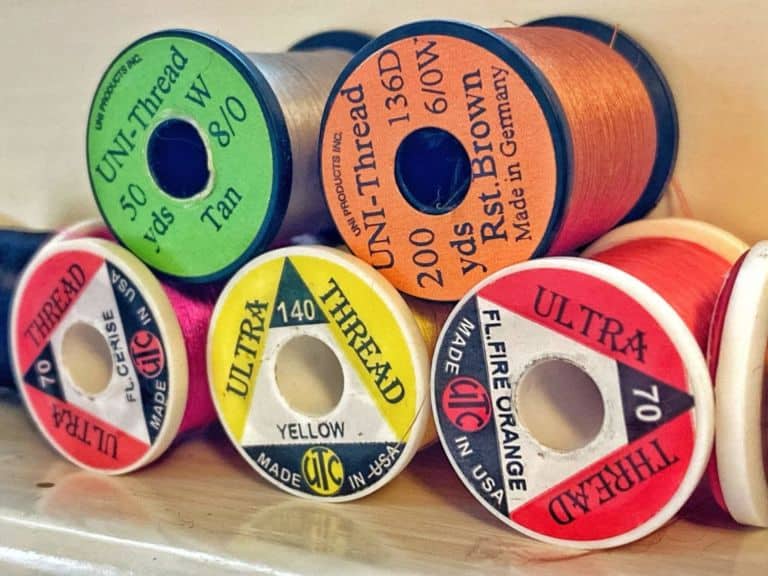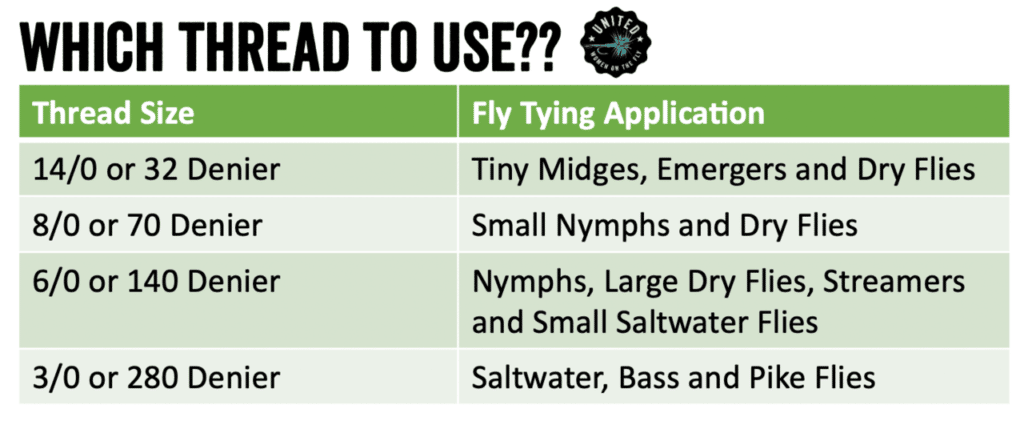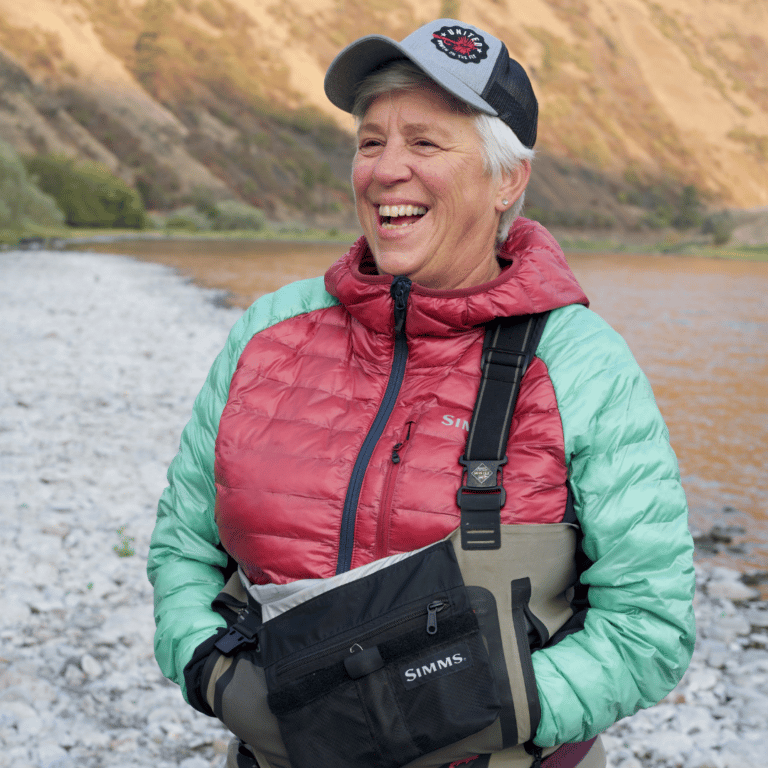
Demystifying thread sizes and selection. It is much easier than we think! J. Michelle Swope (she/her), UWOTF Education Coordinator and founder of Oly Women on the Fly takes us through the basics of fly tying threads.
Thread History
For decades (since the 1930’s), the diameter of fly-tying thread was listed in “aught” sizes: 8/0, 6/0, and 3/0. Size A was also once a common fly-tying thread; it was very thick, suitable for making very large streamers and saltwater patterns.
Today, size 8/0 is usually the thinnest thread available….and we use this thread for tying midges, dry flies, and small nymphs. Tiers specializing in making full-dress Atlantic salmon flies are fanatics about making tiny heads on their flies, and they pull this off by using size 8/0. Most fly shops also carry size 14/0, which is almost gossamer…used to make midges and tiny floating flies.
Size 6/0 is my go to thread…most commonly used for making most of the patterns I tie. Nymphs, freshwater streamers, beefier dry flies, and smaller saltwater patterns(like the Maribou Shrimp pattern I tie for sea run cutthroat). This thread is stronger than size 8/0 so you can apply more tension when you are spinning Deer hair for that perfect Muddler Minnow! (quick aside, I have taken to using UTC 140, pictured below for spinning hair. Virtually unbreakable!)
Saltwater Flies
Tie saltwater, pike, muskie, and other big flies using size 3/0 thread. These threads have plenty of strength to secure large amounts of materials to hooks. Also, the larger hooks used to make these big flies give us plenty of room for these thicker threads.
These are just general rules of thumb about selecting thread. There’s little mystery once you understand the nomenclature of thread sizes. There is some remaining mystery about the Aught system, but the table below, created by a gent name Porter House (yep, that’s his name) helps us solve the mystery of what thread size for what fly.

Aught or not
So, you’ll notice that the thread recommendations include the aught size and something called denier. Denier is a unit of weight used in the textile industry to measure the linear mass density of fibers. Originally, denier was based on a natural reference: a single strand of silk. To be more specific, a 9,000-meter-long strand of silk weighs about one gram. (I’ll let you figure out how many miles of silk that is!) This concept to almost any type of textile, including fly tying thread.
What Size Thread to Use?
Let’s say we wish to tie small dry flies, and we have two 200-yard spools of nylon thread in front of us. One spool of thread is marked 72 denier and the other is 140 denier. Nine thousand meters of size 72 denier thread weighs 72 grams, and the same length of 140 denier thread weighs 140 grams. The spool of 72 denier thread weighs about one-half as much as the 140 denier thread, so we can reason that it must be about half as thick and it is a better choice for making our dainty floating patterns.
In fly fishing, there are few industry wide standards for comparing the size and weight of tackle and fly tying materials. For example, the thickness of one company’s size 8/0 thread might differ from that of another supplier. Denier gives us an exact method for comparing the thicknesses of different threads.
Use the above chart to help determine what thread to use to tie different styles of flies. This chart is not comprehensive, but it is a good start for deciphering thread size.
Denier Summary
The larger the denier number the thicker the thread.




